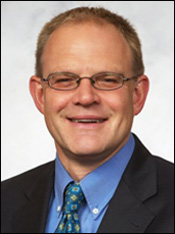Dental patients often prescribed inappropriate antibiotic prophylaxis
Click Here to Manage Email Alerts

Researchers investigating antibiotic prescribing trends at a Department of Veterans Affairs dental clinic found that most patients who should have received only one dose of antibiotic prophylaxis before undergoing a procedure were instead prescribed a prolonged duration of prophylaxis after the procedure.
“To our knowledge, this is the first U.S. report of the appropriateness of antibiotic prophylaxis prescribing prior to dental procedures in adults,” Katie Suda, PharmD, MS, a research health scientist at the Center of Innovation for Complex Chronic Healthcare at the Edward Hines Jr. Veterans Administration Hospital, and colleagues wrote in Open Forum Infectious Diseases. “Our results in a VA clinic identified that 91.8% of antibiotics prescribed for infection prophylaxis were inconsistent with recommendations.”
About 10% of all antibiotics in the United States are prescribed by dentists, according to Suda and colleagues. However, little is known about prescribing practices in dental clinics.
The researchers reviewed health records of 183 veterans undergoing tooth extractions, dental implants and periodontal procedures at the VA dental clinic from Jan. 1 to Dec. 31, 2015. The data showed that 82.5% of patients were prescribed antibiotic prophylaxis. Among them, 92.1% received postprocedural prophylaxis, 2.6% received preprocedural prophylaxis and 5.3% received both. The most common antibiotics prescribed were amoxicillin (71.3%) and clindamycin (23.8%). Nearly half of clindamycin prescriptions were given to patients with no history of a penicillin allergy, the researchers noted.
Based on available evidence, only 8.2% of patients were prescribed antibiotics correctly. Although most patients (87.3%) received prophylaxis when necessary, 84.9% were prescribed postprocedure antibiotics even though preprocedure administration was indicated, according to the researchers. The average duration of postprocedural prophylaxis was 7.2 days, resulting in 824 days of excess antibiotic use.
“In the clinical notes, dental providers were occasionally unaware of the oral health and procedures to be completed prior to the appointment and, thus, need for preprocedure antibiotic prophylaxis,” they wrote. “This may explain the high frequency of postprocedure antibiotics when a preprocedure antibiotic was indicated.”
Despite the high incidence of prolonged antibiotic use, there were no reports of Clostridium difficile infection 3 months after the procedures. In addition, no postprocedure oral infections were reported. Nevertheless, the researchers stressed the importance of ensuring that most patients receive only one dose of antibiotics before undergoing dental procedures.
“Implementing antimicrobial stewardship efforts, including documentation of the medication indication, in dental clinics may be an opportunity to improve antibiotic prescribing for infection prophylaxis,” they wrote. – by Stephanie Viguers
Disclosures: The authors report no relevant financial disclosures.


